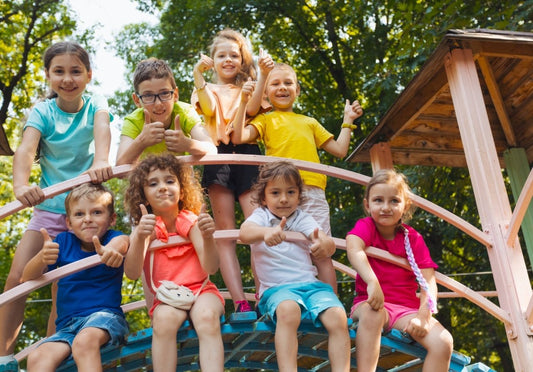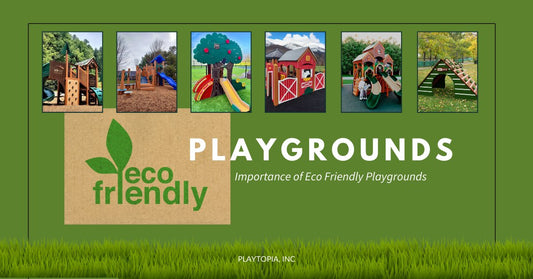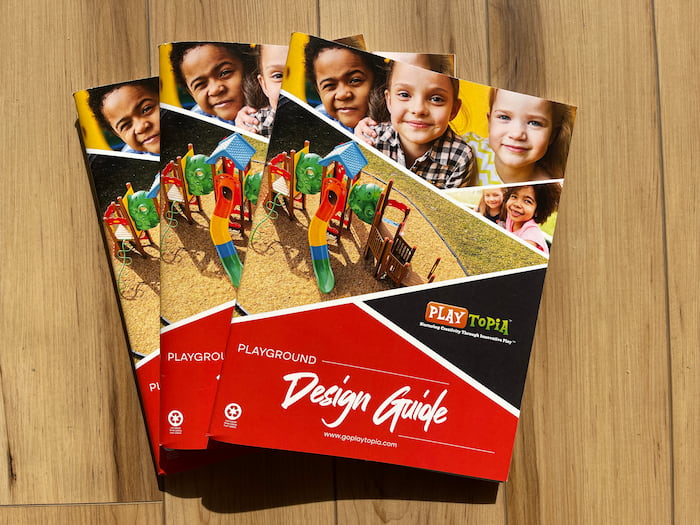
Playground Design for Inclusive Play
Jennie HallShare This Article
Designing Inclusive Playgrounds for People with Disabilities
Creating an inclusive playground is about more than just accessibility; it's about fostering an environment where children of all abilities can play together, learn from each other, and develop essential social and physical skills. Here’s a comprehensive guide to designing a playground that welcomes and accommodates people with disabilities.
Understanding the Need for Inclusive Playgrounds
Inclusive playgrounds are designed to ensure that all children, including those with physical, sensory, and cognitive disabilities, have equal opportunities to play. These playgrounds are not only beneficial for children with disabilities but also promote empathy, understanding, and social integration among all children.

Key Elements of an Inclusive Playground
Accessibility
- Entrances and Paths: Ensure all pathways leading to and within the playground are wide, smooth, and obstacle-free, accommodating wheelchairs and mobility aids. Talk to our design team!
- Surfacing: Use firm, stable, and slip-resistant materials like rubberized surfaces or bonded wood fiber to ensure safe and easy navigation.
- Ramps and Transfer Stations: Install ramps and transfer stations to provide access to elevated play structures. Ensure these features have handrails and are at appropriate heights.
- Tactile Elements: Incorporate elements like textured panels, sand tables, and water play areas to engage children’s sense of touch.
- Auditory Features: Include chimes, drums, and other sound-making equipment that can be enjoyed by children with visual impairments.
- Visual Stimuli: Use bright, contrasting colors and patterns to help children with visual impairments navigate and enjoy the playground.
- Adaptive Swings and Slides: Provide swings with harnesses and slides with wide, gentle slopes to accommodate children with varying physical abilities.
- Ground-Level Play Structures: Ensure a variety of play equipment is available at ground level, including play panels, musical instruments, and interactive games.
- Inclusive Play Zones: Designate areas where children can engage in group activities, such as collaborative games or role-playing scenarios.
- Quiet Spaces: Include quiet areas where children who may be overwhelmed by sensory input can retreat and relax.
- Interactive Panels: Install panels with puzzles, mazes, and educational games that stimulate cognitive development and problem-solving skills.
- Themed Play Areas: Create themed sections like a pirate ship, a space station, or a nature trail to encourage imaginative play and storytelling.
Community Involvement and Feedback
Engage with the community, especially parents and caregivers of children with disabilities, during the planning and design phases. Their insights and feedback are invaluable in creating a playground that meets the specific needs of its users. Conduct surveys, hold public meetings, and involve children in the design process to ensure the playground reflects the community’s desires and requirements.
Safety Considerations
- Regular Inspections: Conduct frequent inspections to ensure all equipment is safe and well-maintained.
- Inclusive Signage: Use clear, easy-to-read signs with braille and visual aids to help children and caregivers navigate the playground safely.
- Fencing and Gates: Install fencing around the playground with secure, easy-to-operate gates to ensure children’s safety.
Funding and Support
Seek funding from various sources, including government grants, non-profit organizations, and community fundraising events. Highlight the benefits of inclusive play and the positive impact on the community to garner support and resources.
Conclusion
Designing an inclusive playground requires thoughtful planning, community involvement, and a commitment to accessibility and inclusivity. By creating spaces where children of all abilities can play together, we foster a more empathetic, inclusive, and vibrant community. Embrace the challenge of designing a playground that is not just accessible but truly inclusive, and watch as children of all abilities come together in play, learning, and joy.


















